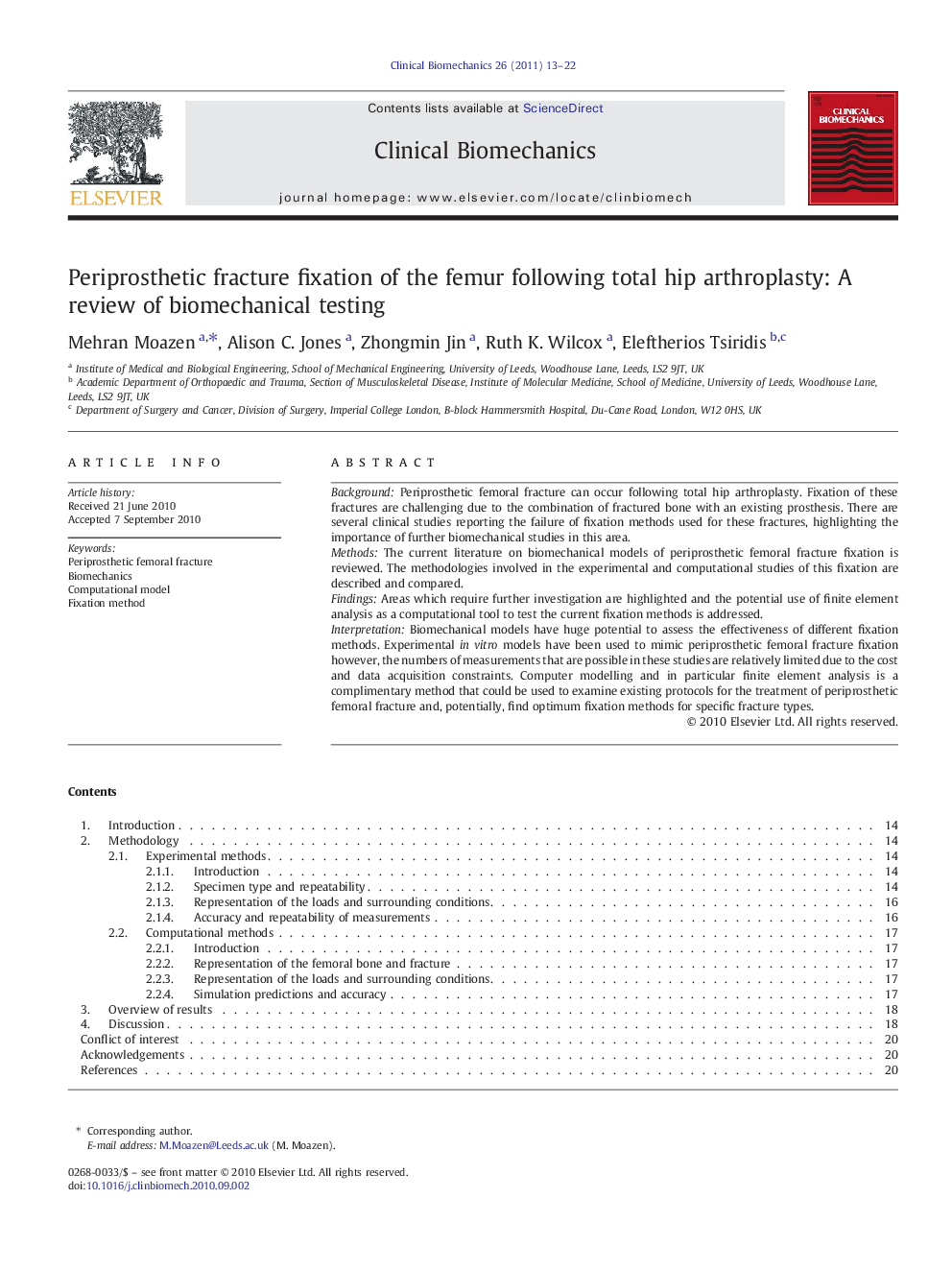| Article ID | Journal | Published Year | Pages | File Type |
|---|---|---|---|---|
| 4050999 | Clinical Biomechanics | 2011 | 10 Pages |
BackgroundPeriprosthetic femoral fracture can occur following total hip arthroplasty. Fixation of these fractures are challenging due to the combination of fractured bone with an existing prosthesis. There are several clinical studies reporting the failure of fixation methods used for these fractures, highlighting the importance of further biomechanical studies in this area.MethodsThe current literature on biomechanical models of periprosthetic femoral fracture fixation is reviewed. The methodologies involved in the experimental and computational studies of this fixation are described and compared.FindingsAreas which require further investigation are highlighted and the potential use of finite element analysis as a computational tool to test the current fixation methods is addressed.InterpretationBiomechanical models have huge potential to assess the effectiveness of different fixation methods. Experimental in vitro models have been used to mimic periprosthetic femoral fracture fixation however, the numbers of measurements that are possible in these studies are relatively limited due to the cost and data acquisition constraints. Computer modelling and in particular finite element analysis is a complimentary method that could be used to examine existing protocols for the treatment of periprosthetic femoral fracture and, potentially, find optimum fixation methods for specific fracture types.
